5 Garage Ventilation Options for Fresh & Safe Air
Author: Omar Alonso | Editor: Omar Alonso
Review & Research: Jen Worst & Chris Miller

Is your garage smelling musty? It could be overly warm inside, or it feels humid. While most people see the garage as separate from your home, many open into the kitchen or adjacent rooms. The musty, damp, or toxic air from the garage can get into your home, causing problems for you and your family. This is why garage ventilation options exist.
You can eliminate this problem by properly ventilating the garage. This post goes over how to vent a garage effectively. We'll give you five methods to restore the air quality inside the garage and remove the health threat from your home, with three being proper fixes and two being ones you can apply now in the meantime.
How to Ventilate a Garage in 5 Ways
Now that we know why you need to ventilate your garage, let's unpack three methods to keep the air circulating and the temperature down and remove the health risks from your home.
1) Install a Garage Exhaust Fan
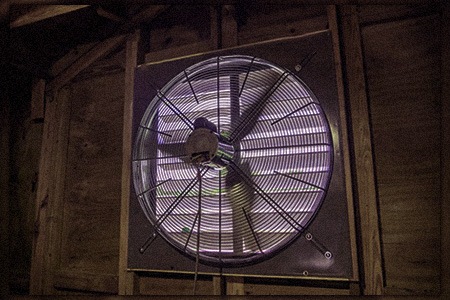
The easiest solution to ventilating your garage is installing an exhaust fan kit or a "whirly-curly" to the roof. These units cost anywhere from $100 to $300, depending on their capacity. If you have a three-door garage, you'll need a bigger exhaust fan, or more than one unit compared to a single garage.
The fan sits on the garage ceiling, pulling air into the rafter and away from the house. If your garage roof is completely sealed, you might have to run ducting to the exhaust fan outlet and out of the wall to vent the air, or even connect it to any types of roof vents.
If you have handy skills, installing one in a few hours is easy. However, you'll need to ensure you have proper electrical connections, or it presents a fire risk to your home. Call a professional if you don't have the skills to complete the installation.
An attic fan or "whirly-curly" is also a great option for keeping the garage well-ventilated. The attic fan draws in the hot air expelling it through roof vents. If you find your garage is moist and humid, installing a dehumidifier is another method of removing the moisture from the air, though there can be some disadvantages of a dehumidifier as well.
You have two options for mounting garage exhaust fans in your garage.
Window Exhaust Fans
These fans fit into the window frame, expelling air outside. They're easy to install and come in a range of capacities to suit the size of your garage. This is easiest if you have a finished garage and don't want to add extra work by cutting holes in the ceiling.
Ceiling Exhaust Fans
These fans mount to the ceiling and draw the air into ducting or into the roof. They're more efficient than window fans because warm air rises into the rafters. If you have an unfinished garage then you should definitely consider this option.
Installing a Garage Ceiling Exhaust Fan in 5 Steps
A ceiling exhaust fan is a popular option for controlling heat and humidity in the garage. However, installing a window exhaust fan or a floor fan is more challenging. Follow these steps to set it up in the ceiling.
Step 1 – Connect the exhaust ducting to the fan. Push it through the roof until the nozzle is through the roof boards.
Step 2 – Secure the ducting outside the roof with the installation brackets provided in your kit.
Step 3 – Connect the wiring to the fan and mount the fan to the ceiling.
Step 4 – After securing the fan, caulk the edge of the casing to prevent air from escaping back into the garage, reducing the fan's efficiency.
Step 5 – Turn the power on and test the new fan.
Call a professional for fitment if you have no experience working with your home's electrical system. Safety must be placed as the highest importance.
Maintenance – Inspect the Garage Exhaust Ventilation System
After installing your exhaust fans and understanding how exhaust fans work, you'll need to maintain the system. The ducting can collect lint, pollen, and other debris, clogging the system over time.
You can clean the ducting using a vacuum cleaner or a feather duster. If the ducting has bends, you can reach or call an HVAC company to clean the ducting at the start and end of the summer. These are among your best garage ventilation options.
2) Install Exhaust Vents in the Garage
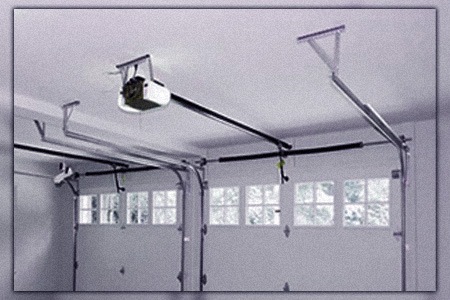
Exhaust vents are a popular alternative to fan units. They don't require any electrical parts, which makes them easier to install, and they are the better choice if you don't have a power supply running to the garage. Garage exhaust vents come with three options.
Install Ceiling Exhaust Vents
The ceiling exhaust vents pull warm air out of the garage, allowing fresh air to flow into the area before venting it out. The ceiling exhaust vents are a good choice for removing warm air circulating in the room without the assistance of a fan. Vents come in different sizes and shapes, allowing you to customize them to your garage requirements.
Install Wall Exhaust Vents
If your garage has windows, you can open them, and they provide the same effect as wall exhaust vents for the area. However, if your garage has no windows, you can create the exhaust effect by installing wall vents. This option is better for garages with ceilings instead of exposed rafter designs.
Install Garage Door Vents
These vents fit into the garage door, providing the same ventilation function as ceiling and wall vents. They're available in various sizes and styles and install easily with DIY methods. They work with most types of garage doors though you'll want to consider any security issues you're introducing by using these.
3) Install a Ceiling Fan and/or Floor Fan for the Garage
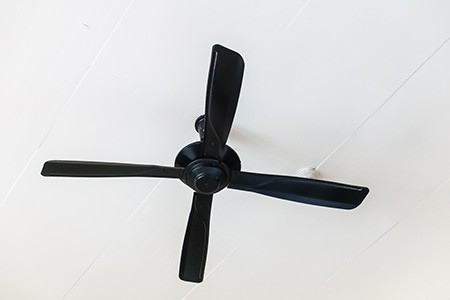
The final of the garage ventilation options is to install a ceiling fan in your garage. Like the floor fan method, a ceiling fan keeps the air circulating inside the garage. It's different from an exhaust fan because it doesn't pull the air to the outside of the garage.
Instead, the ceiling fan keeps the air circulating, allowing it to escape the room naturally. This option is a good choice for airy garages with gaps between the garage door and the rails that open and close the door. They also work in garages with windows or wall/door/ceiling venting systems.
The fans come in various sizes and capacities. Look at the "CFM" rating on the fan to see how much air it moves around. The larger your garage, the higher the CFM rating required by the fan to move the air and ventilate the space. There are ceiling fan alternatives with high CFM ratings too, so don't feel stuck with that one option.
It's easy to mount the ceiling fan yourself. You can mount it to the trusses on the rafters and wire it into the garage's electrical system. If you don't have any handy experience, call a professional to fit it for you. Most handypersons charge around $80 to $120 per hour, and it takes them one or two hours to complete the job.
Floor fans and oscillating fans are other options to keep the air moving inside the garage, among any other types of fans. They don't have an exhaust function, but they might be enough to ventilate the area if your garage has decent airflow.
4) Open Your Garage's Windows & Doors
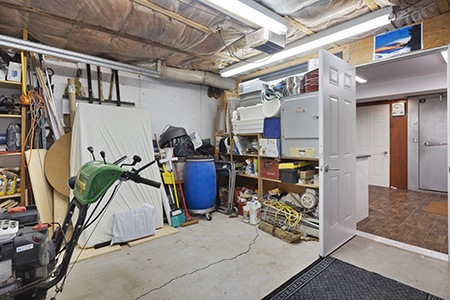
I'll keep this short as to not insult you, but if your garage has a big garage door, a normal sized side door, and/or windows, opening any of them can help fairly significantly with ventilating your garage.
If you can open any of these on opposite sides of the garage, you'll create air flow which works much better and faster than having only one of these doors or windows opened. If you have screens on any of these, all the better to keep insects out and deter people who might want to help themselves to your tools.
5) Run the Air Conditioning
Another less desirable option is to run your central air conditioning if you have vents leading into the garage. What this does is introduce fresh air which then creates extra pressure inside the garage, forcing the old, stale air out through any passage it can escape through. Any types of air conditioners can work, though, much like a fan would.
Why Do You Need to Ventilate the Garage?
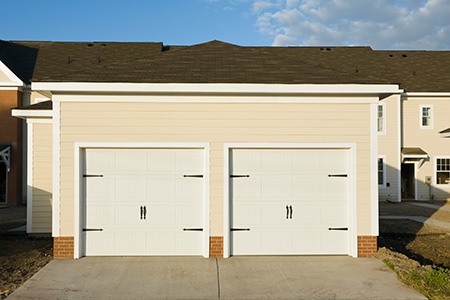
Let's start with why you need to properly ventilate the garage with any of these garage ventilation options. Having none of them isn't an option, especially if you run cars or use chemicals in there. Here are the health problems and hazards if you leave this problem unchecked.
Remove Toxic Fumes
Carbon Monoxide (CO3) is a deadly gas that's odorless, tasteless, and a byproduct of combusting hydrocarbons. It's one of the components of emissions produced by cars using gasoline-powered engines. This is besides the gasoline smell that can enter the house.
It's also why people in poorly ventilated areas may pass away if the vehicle is running and there is no fresh oxygen supply. The CO3 fumes could leak into the house and cause a huge health hazard for your family.
Fouled Garbage Containers
If your garbage cans are in the garage and it starts to get warm, it fast-tracks the decomposition process. In poorly ventilated garages, the cans produce a horrible smell in warm weather.
The odor comes from the bacteria consuming and thriving in the garbage cans. This bacterium can enter your home and cause sickness and dangerous health conditions for you and your family.
Prevent Mold & Mildew
If you have west weather and water manages to penetrate a poorly ventilated garage, it provides the ideal environment to produce mildew and mold. These fungal pathogens produce spores that float in the air, entering your home through adjacent entrances to the garage. Your family might develop allergic reactions and respiratory problems from airborne spores floating in your home. It will help with your garage freezer in the summer not having to work so hard, too.
Other Factors Influencing Air Ventilation in the Garage
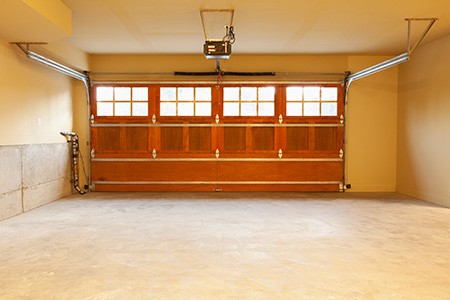
There are several other factors informing the ventilation of your garage. West and south-facing garages battle with controlling warm temperatures in the summer. The warm weather increases the chances of mold and mildew growing in damp spaces in the garage.
Parking your car inside a poorly ventilated garage and immediately closing the door is a bad idea. The warm motor heats the air, trapping it in the garage. It's better to leave the car in the driveway for a few hours after you arrive home, giving it time to cool down.
Insulated garage doors are efficient at keeping out the cold in the winter, but they'll lock in heat during the summer if you don't have effective ventilation. These are just some of the pros and cons of insulating your garage.
You Have Plenty of Garage Ventilation Options
The proper ventilation of your garage is essential to remove the health and safety risks from a poorly ventilated space. At least one of the garage ventilation options in this post will work for you. Decide on the right system to match your garage and budget, and ensure you have a well-ventilated garage this summer.



